1,575 days, 2,408 entries ...
Newsticker, link list, time machine: HOLO.mg/stream logs emerging trajectories in art, science, technology, and culture––every day
Donning his curator hat, Berlin-based artist Simon Denny turns New York’s Petzel into a “Multi-User Dungeon (MUD)” that connects 1970s table-top RPGs, early BBS networks, modern MMOs, and the metaverse. On view are works by 15 artists including Genevieve Goffman, Jack Goldstein, Josh Kline, Suzanne Treister, and Anicka Yi that “navigate the uncanny skeuomorphism of virtual worlds as they evolve over time and spill over into politics, finance and culture.” Denny’s own solo show, “Dungeon,” explores similar themes in parallel.
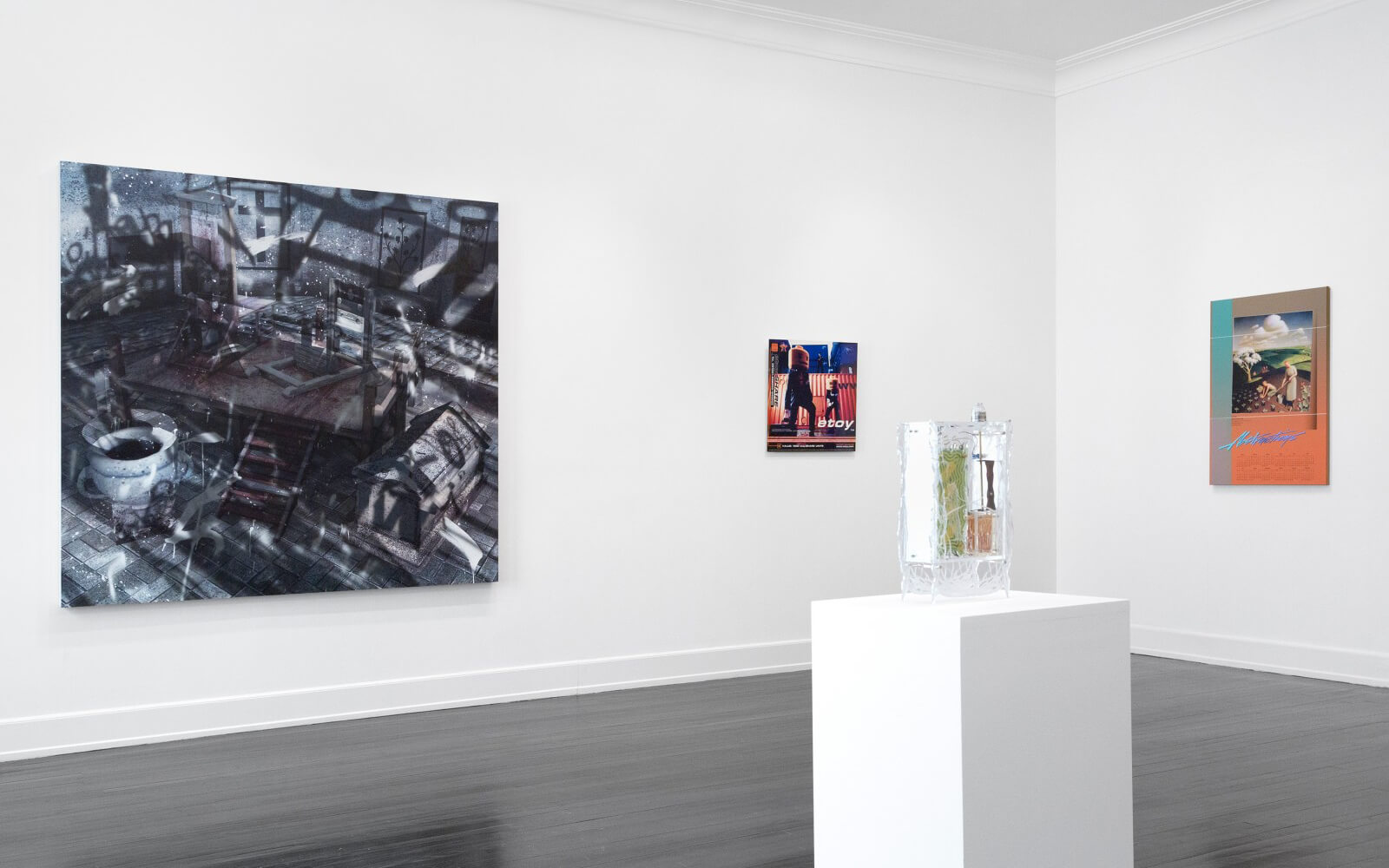
KW Berlin opens “Poetics of Encryption,” an extensive group exhibition that builds on curator Nadim Samman’s eponymous book, illuminating “Black Sites, Black Boxes, and Black Holes”—terms that indicate how technical systems capture users, how they work in stealth, and how they distort cultural space-time. The show gathers both historic and newly commissioned works by over 40 artists including Nora Al-Badri, Clusterduck, Kate Crawford & Vladan Joler, Simon Denny, Eva & Franco Mattes, Trevor Paglen, Rachel Rossin, and Troika.
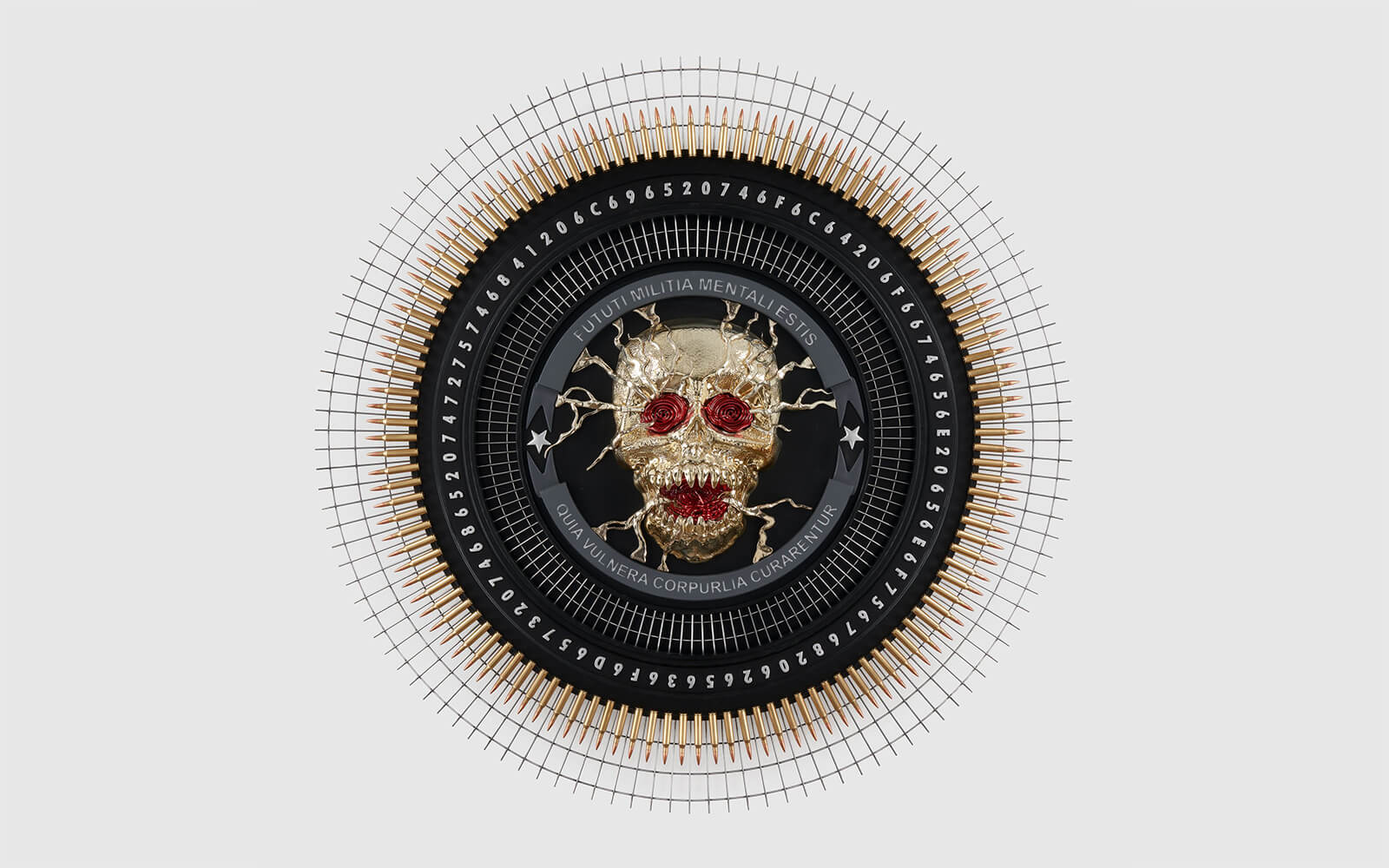
Eva & Franco Mattes solo exhibition “508 Loop Detected” opens at Apalazzogallery (APG) in Brescia (IT), premiering a series of AI Circuit (2024) works that loop AI-processed photos of past shows and an updated version of Personal Photographs (2024, image). The latter conceals a data transfer of newly taken private photos inside a brightly coloured cable loop that spills beyond Apalazzo’s baroque walls. Meanwhile, Roomba Cat (2023) roams around indoors, manifesting meme culture with motorized taxidermy.
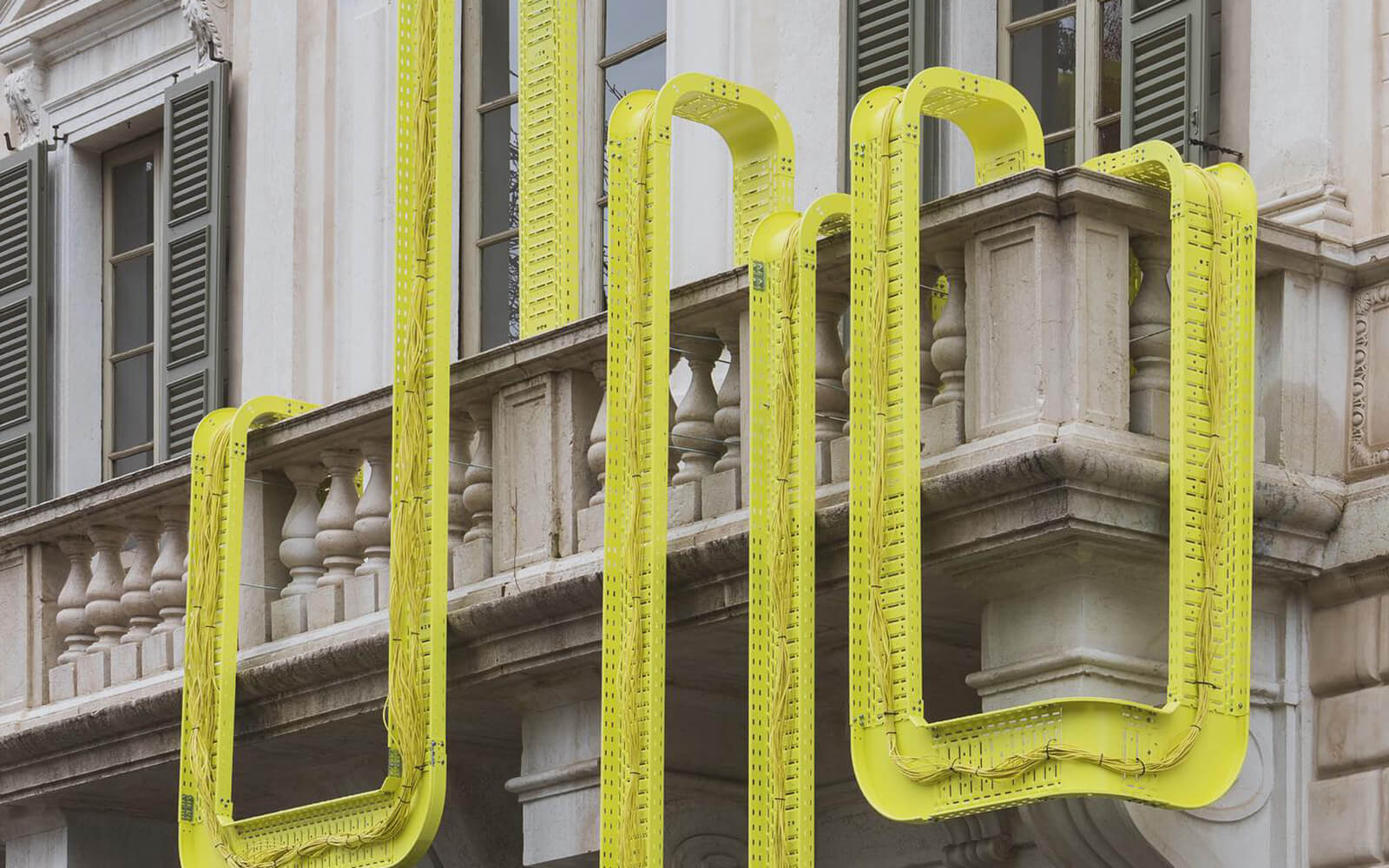
“At its best, it tapped into creativity and wit that had lain dormant in the population, showcasing talents that didn’t previously exist because there had been no form or shape for them to take. Live snark became an art.”
“For me, it encapsulates the ways we’ve come round to performing and selling ourselves online. How we’re urged to almost embody capitalism!”
“Creating a single artwork on a small website at this point is a kind of Land Art. To view it you have to leave the urban centers of the feed and go to some off-grid locale. Nobody is coming to visit, but everyone says they want to.”
Complementing an eponymous symposium and Kunsthall Trondheim (NO) exhibition, “Attention After Technology” opens on the Tropical Papers platform. IRL exhibition participants biarritzzz, Vivian Caccuri, Shu Lea Cheang, CUSS Group, Kyriaki Goni, and Berenice Olmedo contribute browser-based works exploring shifting attention norms. Femke Herregraven’s Rewild the Wandering Mind (2023, image), for example, quotes literary sources to muse over “how attention evolved into a moralizing and disciplinary force.”

“The internet was loaded with earnest content and search engines proved vital to indexing and recalling every last morsel of it. There was a sense of abundance: you could read about anything and research everything.”
“Not having one theme imposed by a curator but multiple curators contributing their unique concepts and artist selections to the same event was unheard of at the time and remains uncommon today, even after a decade.”
Capping a two-year project by Art Hub Copenhagen, Tropical Papers, and others, “Attention After Technology” opens at Kunsthall Trondheim (NO). Artists including biarritzzz, Kyriaki Goni, and Femke Herregraven explore “how algorithms affect us and how we could imagine them otherwise.” Johannesburg-based CUSS Group’s The Pursuit of a True and Only Heaven (Disintegration Cycle) (2023, image), for example, recast Instagram’s Explore page as a trauma-inducing “snapshot of South African society.”
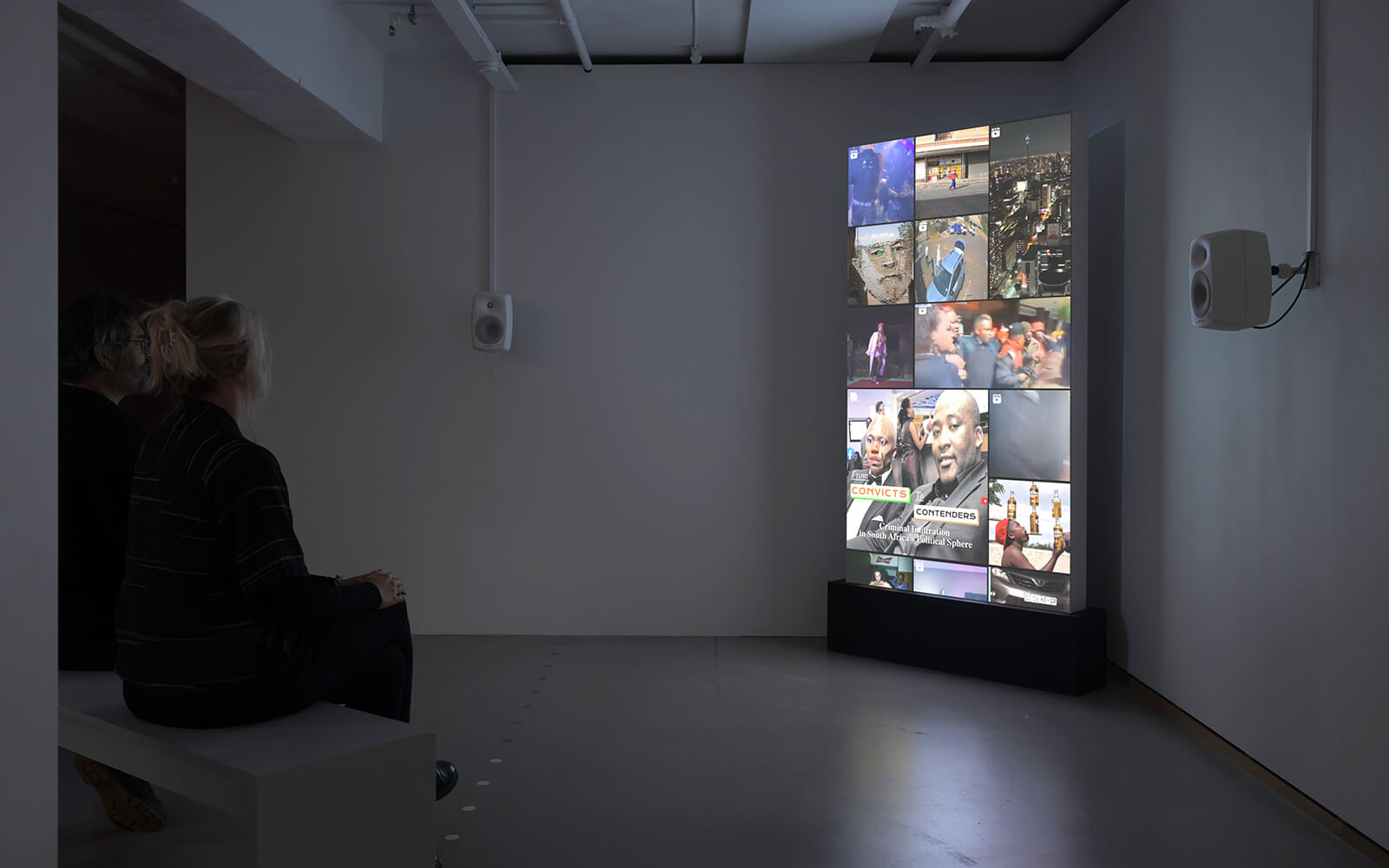
Tamara Kneese
Death Glitch
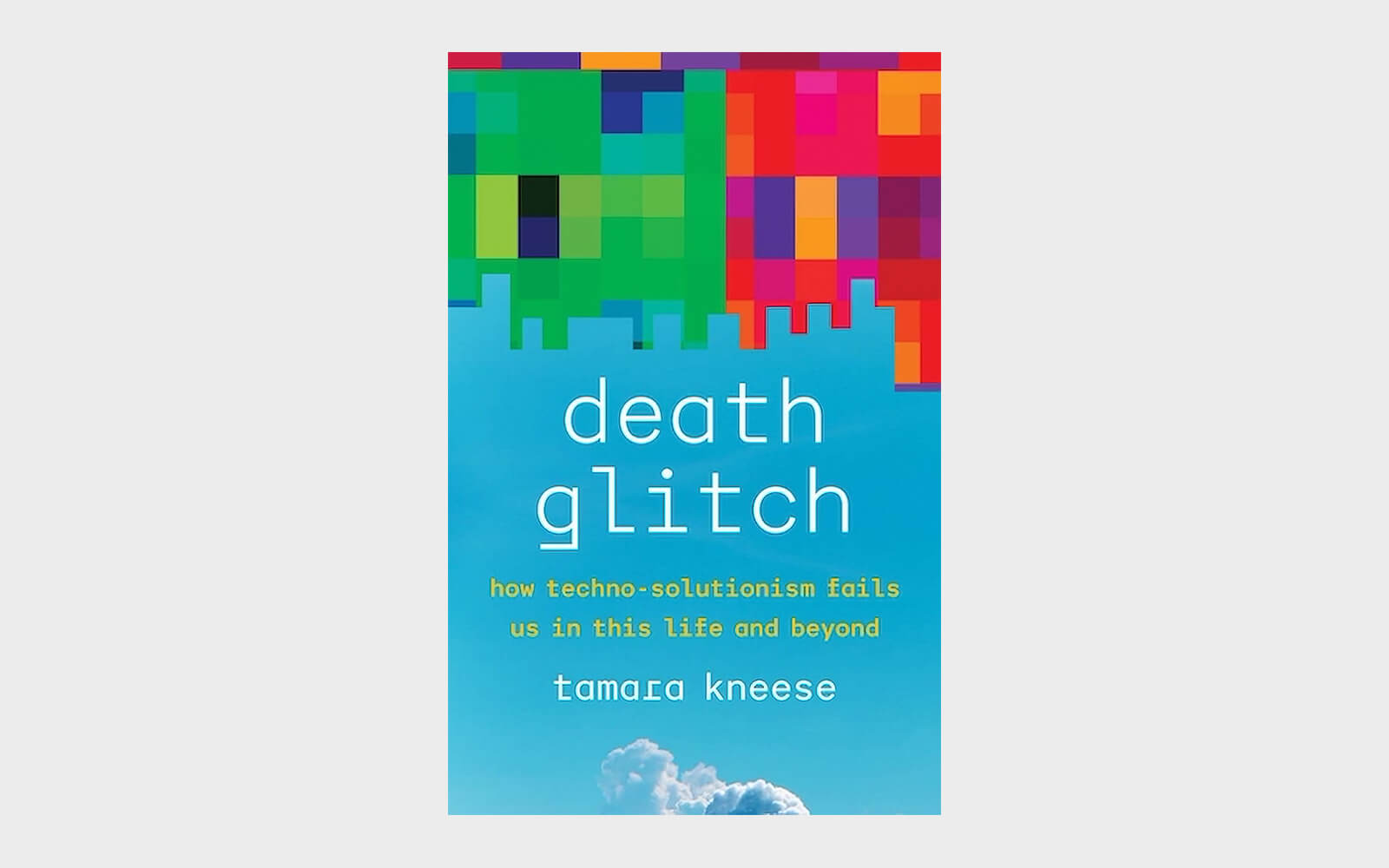
“It’s easier to build LK-99 at home than it is to write a good internet regulation.”
Billed as their largest solo show to date, Eva & Franco Mattes’ “Fake Views” opens at Frankfurter Kunstverein (DE), illuminating platform culture, internet infrastructures, and online communities. For their new installation P2P (2022-23, image), for example, the Italian net art duo invited peers Nora Al-Badri, Simon Denny, Do Not Research, Olia Lialina, Jill Magid, and Jon Rafman to create new works to be hosted on a peer-to-peer server enclosed in a wire cage—an ‘exhibition within the exhibition.’
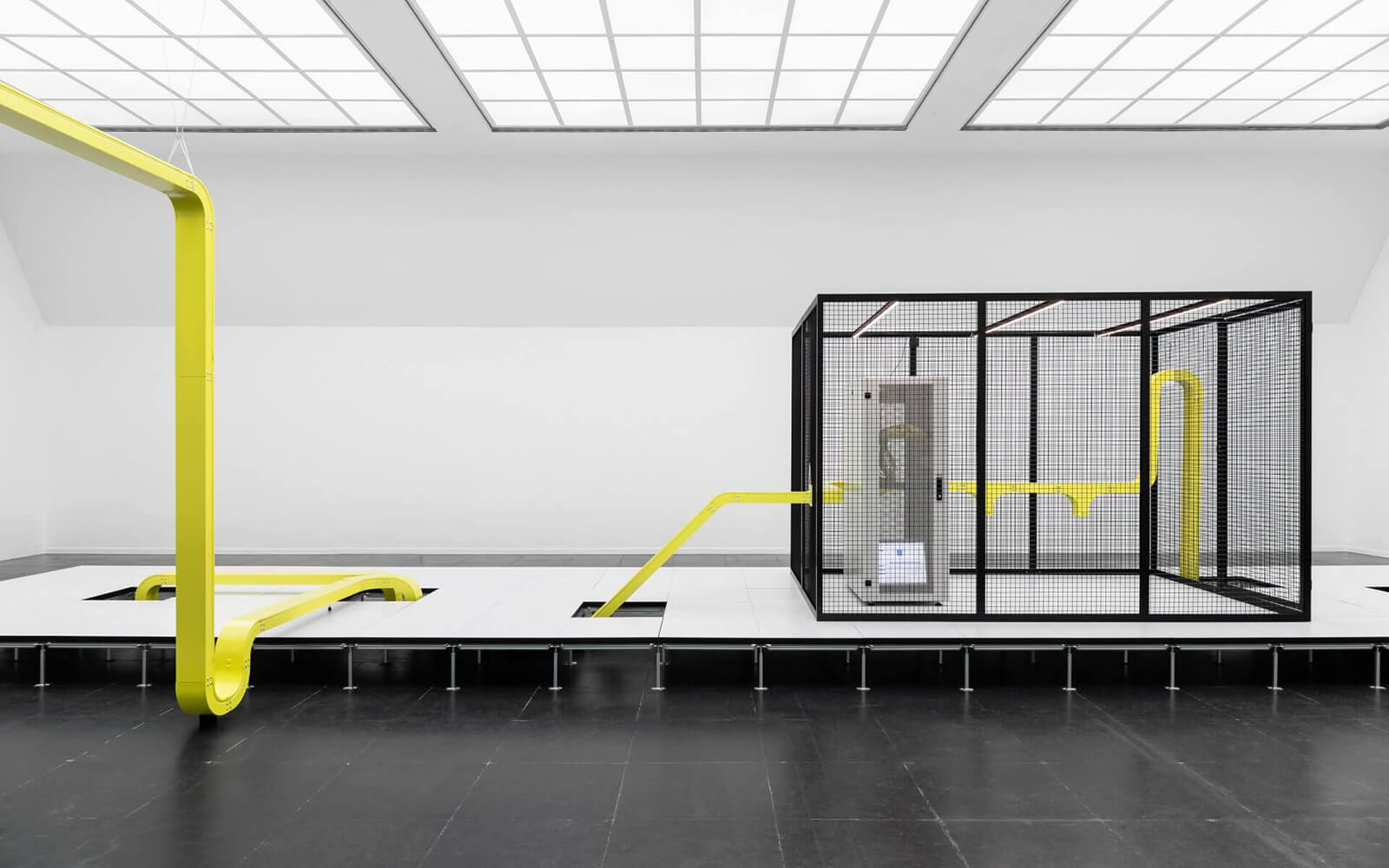
“How do we hold digital space? We hold space as usernames, user profiles, icons, and avatars. The ability to hold a unique space is fundamental to taking part in society.”
Jan Robert Leegte’s solo exhibition ”No Content: Contemplations on Software” opens at Upstream Gallery in Amsterdam, examining digital media through “the carrier and reality that holds it.” JPEG (2023), for example, is a series of algorithmic images that fully express the signature compression; Broken Images (2023) foregrounds the volatility of digital assets by minting broken links as NFTs, and Scrollbars (image)—a Leegte classic—presents obsolete interface elements as sculptural and cultural debris.
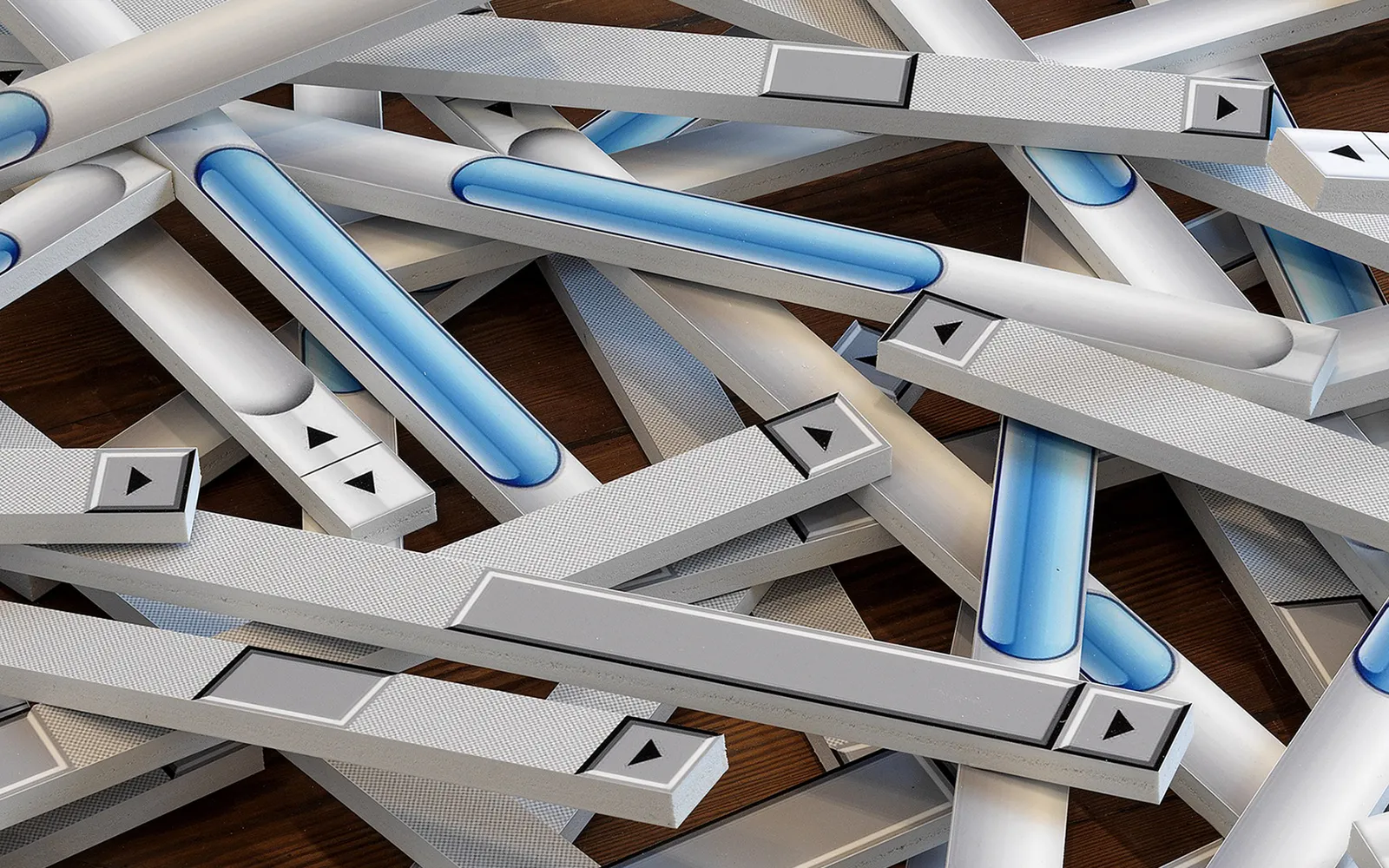
Köerner & Martinez (eds.)
Software for Artists Book: Untethering the Web
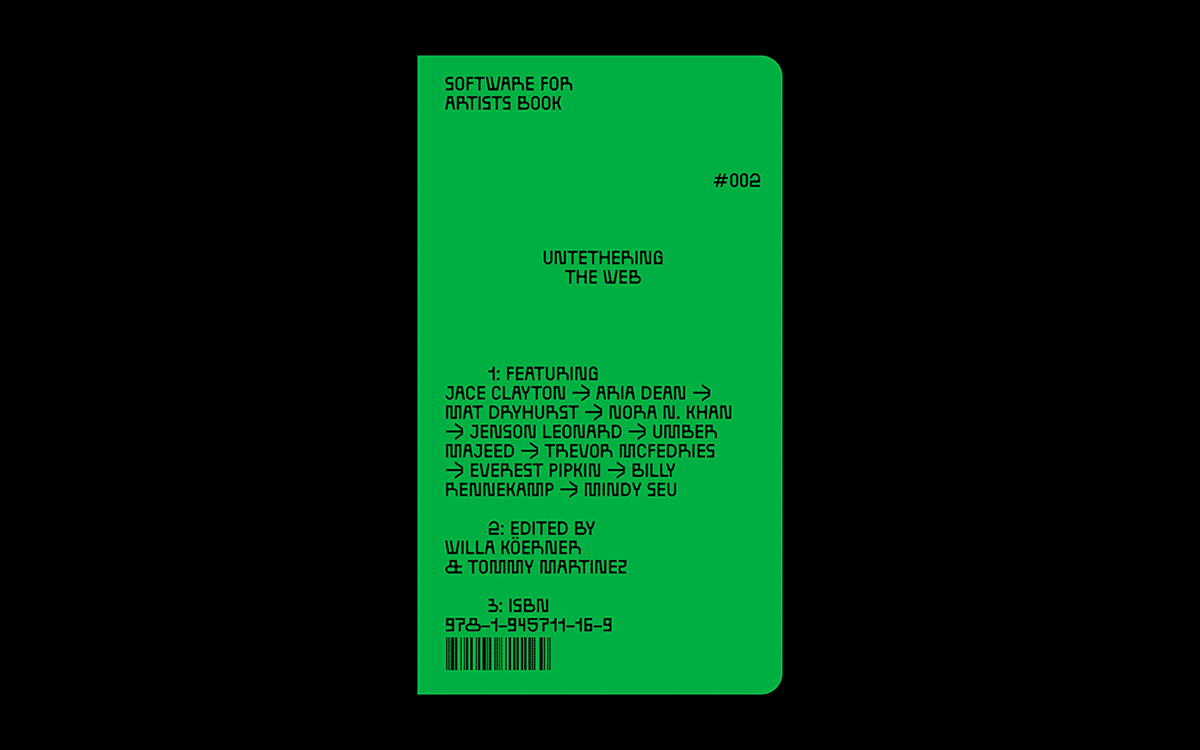
“Is it like a postcoital-snail telegraph? Or like a Renaissance-era wheel device that allowed readers to browse multiple books at once? Or perhaps like a loom that weaves together souls?”
“It felt like it was taking away the power of computing from people. I could see that this was slowly eating away at people’s ability to see the computer for what it was: an open a box of tricks.”
Art blogger Régine Debatty reflects on Éva Ostrowska’s series of post-internet wool tapestries, currently on view at the “Swipe Right! Data, Dating, Desire” exhibition at iMAL, Brussels (image: I am not the only one wondering…, 2019). Rather than using craft for romantic commentary, the French mixed media artist “holds a facetious and slightly cruel mirror to our new dating habits,” notes Debatty. “Her woolly compositions lay bare our insecurities, little infamies, and anxieties.”
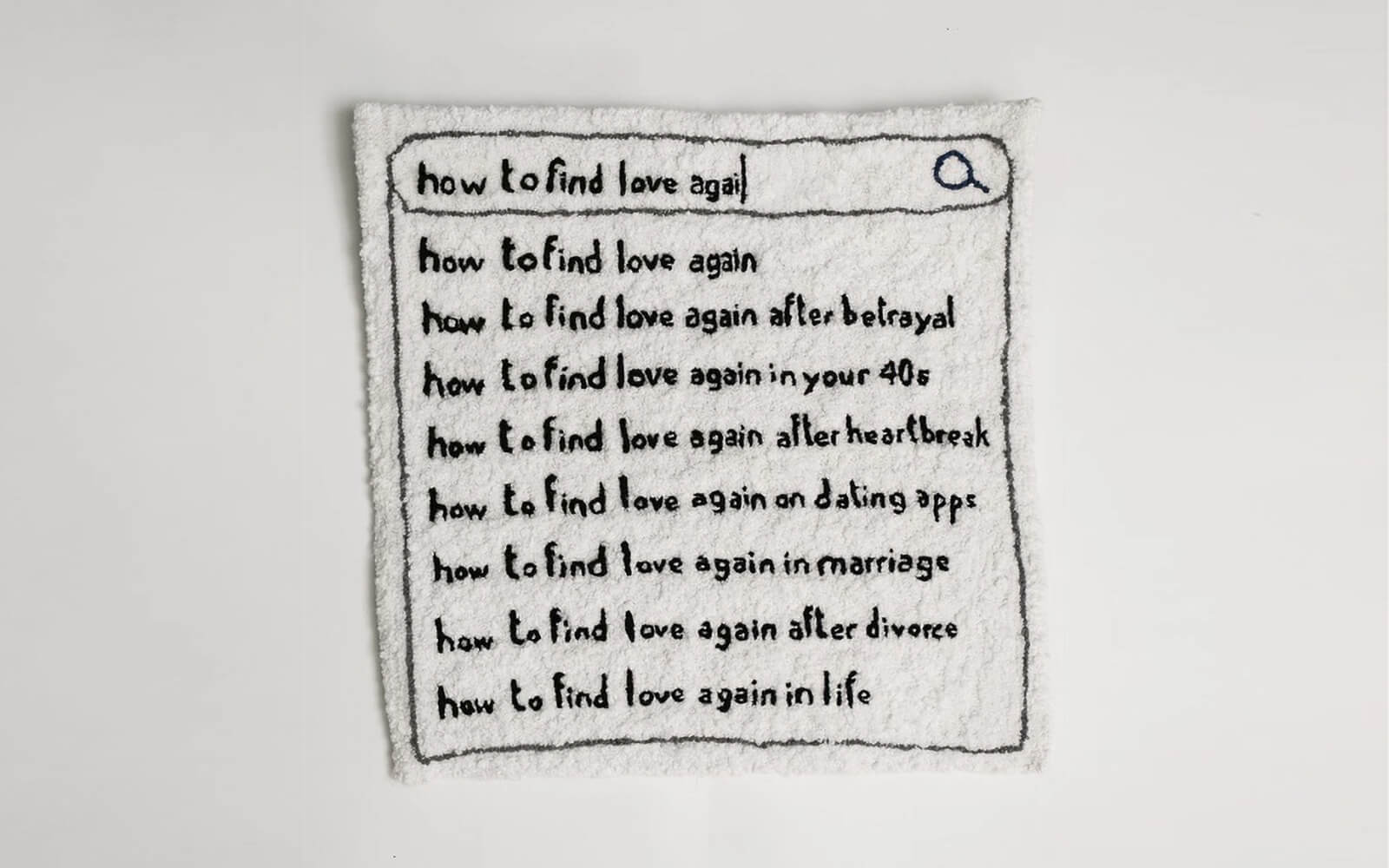
Daily discoveries at the nexus of art, science, technology, and culture: Get full access by becoming a HOLO Reader!
- Perspective: research, long-form analysis, and critical commentary
- Encounters: in-depth artist profiles and studio visits of pioneers and key innovators
- Stream: a timeline and news archive with 1,200+ entries and counting
- Edition: HOLO’s annual collector’s edition that captures the calendar year in print
